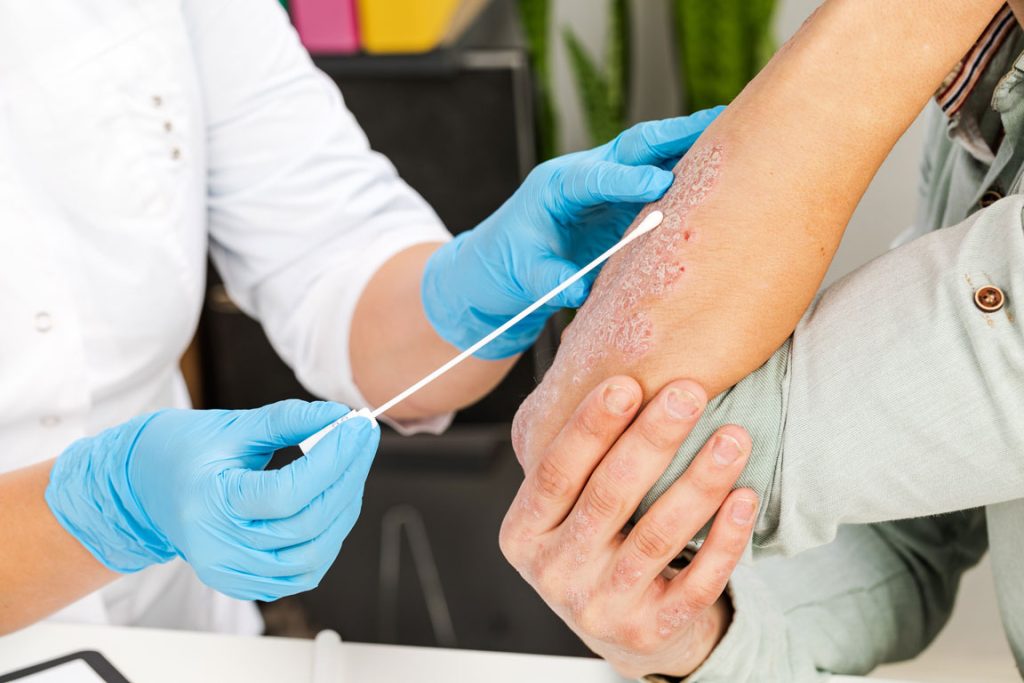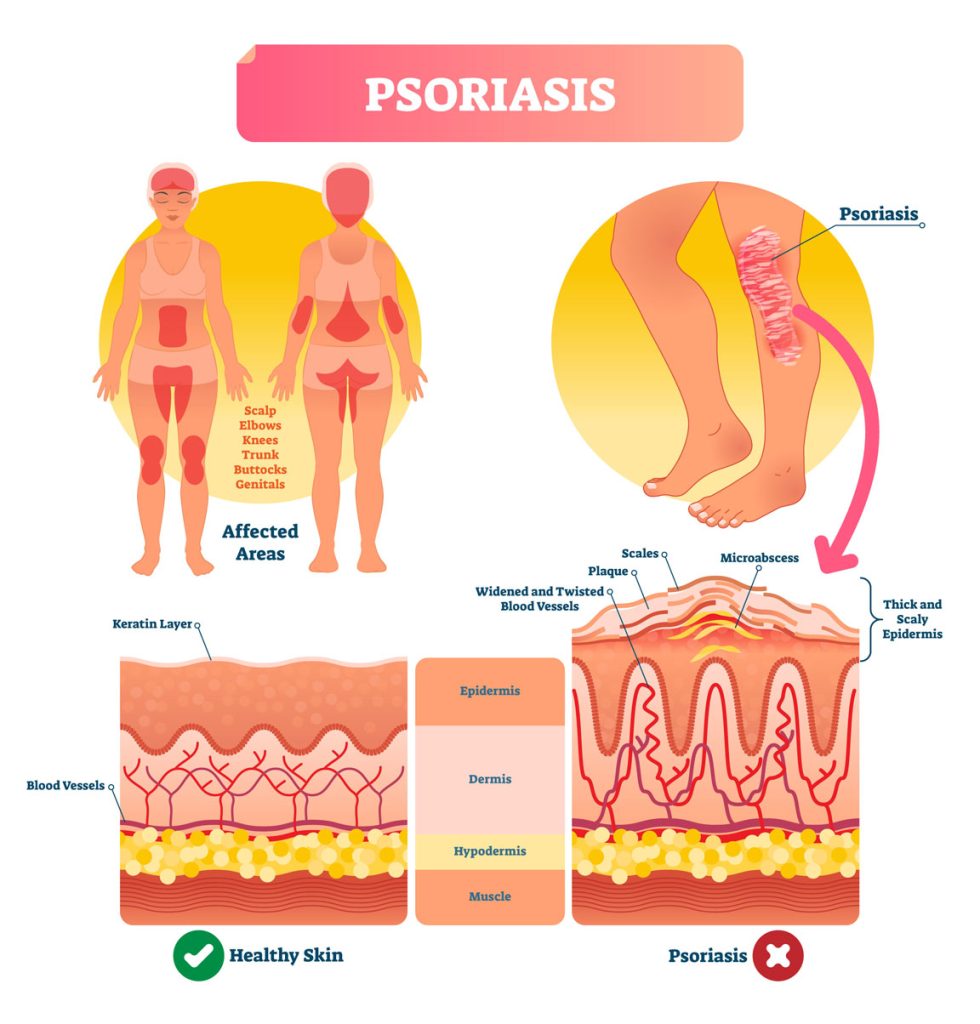Initiated by the National Psoriasis Foundation in 1997, Psoriasis Awareness Month brings attention to the facts and misconceptions about psoriasis. Nearly ten million adults in the US live with psoriasis, and this health condition affects over 120 million people worldwide.
What is Psoriasis?
Psoriasis is a chronic autoimmune skin disease that speeds up the growth cycle of skin cells.
How Is Psoriasis Diagnosed and Treated?
Psoriasis often has a typical appearance that a primary care doctor can recognize, but it can be confused with other skin diseases (like eczema), so a dermatologist (skin doctor) is often the best doctor to diagnose it. The treatment of psoriasis usually depends on how much skin is affected, how bad the disease is (e.g., having many or painful skin patches), or the location (especially the face). Treatments range from creams and ointments applied to the affected areas to ultraviolet light therapy to drugs (such as methotrexate). Many people who have psoriasis also have serious health conditions such as diabetes, heart disease, and depression. Some people with psoriasis also have an inflammatory condition which affects their joints, called psoriatic arthritis.
Psoriatic arthritis has many of the same symptoms as other types of arthritis, so a rheumatologist (arthritis doctor) is often the best doctor to diagnose it. The treatment of psoriatic arthritis usually involves the use of drugs (such as methotrexate).
Psoriatic disease (when a person has psoriasis or psoriatic arthritis) may be treated with drugs (such as methotrexate) or a combination of drugs and creams or ointments.
–CDC

What Are the Symptoms of Psoriasis?
- Psoriasis causes patches of thick red skin and silvery scales. Patches are typically found on the elbows, knees, scalp, lower back, face, palms, and soles of feet, but can affect other places (fingernails, toenails, and mouth). The most common type of psoriasis is called plaque psoriasis.
- Psoriatic arthritis is an inflammatory type of arthritis that eventually occurs in 10% to 20% of people with psoriasis. It is different from more common types of arthritis (such as osteoarthritis or rheumatoid arthritis) and is thought to be related to the underlying problem of psoriasis.
- Psoriasis and psoriatic arthritis are sometimes considered together as psoriatic disease.

Types of Psoriasis
There are different types of psoriasis, including:
- Plaque psoriasis. This is the most common kind, and it appears as raised, red patches of skin that are covered by silvery-white scales. The patches usually develop in a symmetrical pattern on the body and tend to appear on the scalp, trunk, and limbs, especially the elbows and knees.
- Guttate psoriasis. This type usually appears in children or young adults, and looks like small, red dots, typically on the torso or limbs. Outbreaks are often triggered by an upper respiratory tract infection, such as strep throat.
- Pustular psoriasis. In this type, pus-filled bumps called pustules surrounded by red skin appear. It usually affects the hands and feet, but there is a form that covers most of the body. Symptoms can be triggered by medications, infections, stress, or certain chemicals.
- Inverse psoriasis. This form appears as smooth, red patches in folds of skin, such as beneath the breasts or in the groin or armpits. Rubbing and sweating can make it worse.
- Erythrodermic psoriasis. This is a rare but severe form of psoriasis characterized by red, scaly skin over most of the body. It can be triggered by a bad sunburn or taking certain medications, such as corticosteroids. Erythrodermic psoriasis often develops in people who have a different type of psoriasis that is not well controlled, and it can be very serious.
